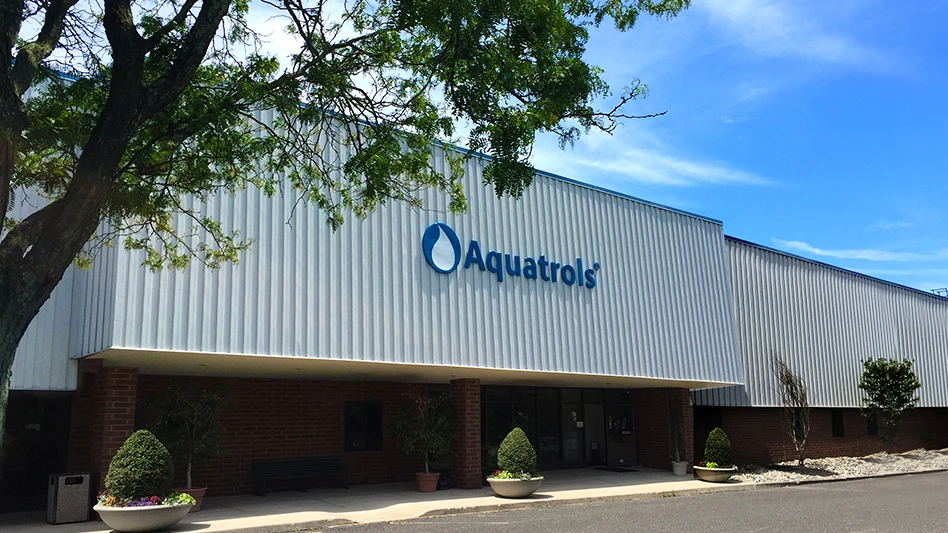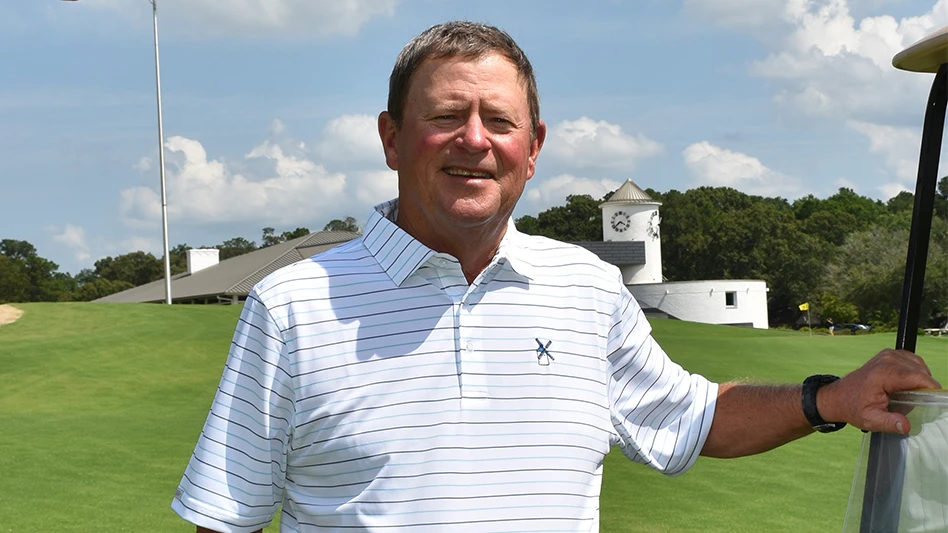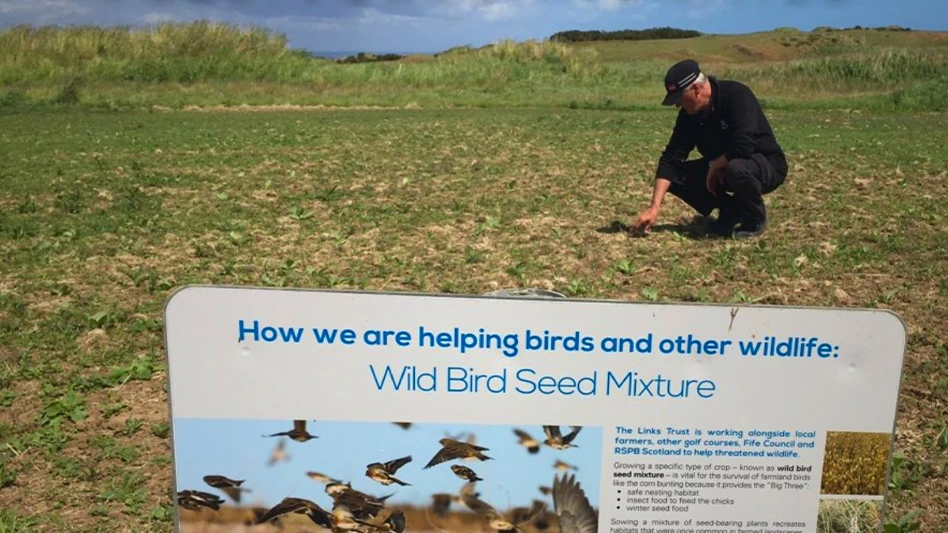 Like a lot of people who’ve lived through severe trauma, superintendent Robert Edmonson from Silver Lakes Golf Club in Glencoe, Ala. remembers nearly every detail of what he did on April 27, 2011. That’s the day an EF4 tornado came through his facility, part of the famed Robert Trent Jones Golf Trail.
Like a lot of people who’ve lived through severe trauma, superintendent Robert Edmonson from Silver Lakes Golf Club in Glencoe, Ala. remembers nearly every detail of what he did on April 27, 2011. That’s the day an EF4 tornado came through his facility, part of the famed Robert Trent Jones Golf Trail.
“We had about two weeks’ notice, based on computer models, that conditions might be favorable for an outbreak of tornadoes,” Edmonson recalls. But no one had an idea where or when they might strike. On the morning of April 27, “they grew more confident there was going to be a big outbreak. That morning we actually lost 15 trees from a line of thunderstorms.”
Then, the sun came out and Edmonson and his crew readied the course for a tournament that was slated to be played at Silver Lakes that day.
“They were predicting that bad stuff was going to happen in the afternoon. My assistant Patrick and I just had gut feelings that something bad was going to happen that day. We finished the day and everyone went home at 3:30. Then we started seeing a big outbreak of tornadoes all over the place,” Edmonson recalls, adding that more than 300 people lost their lives that day in northern Alabama. He argues that tower cameras in places like Tuscaloosa and Birmingham saved a lot more lives that day, “because being able to see tornadoes moving through these places, which added a sense of urgency to get into a safe place.”
“I got home and went to the store to get more batteries,” he says. “By the time I got home just west of the golf course here, my wife was watching TV and they said, ‘If you live on the Southside, you need to get to a safe place now.’ ”
Knowing the clubhouse at Silver Lakes had a huge basement, Edmonson took his wife, three kids and family dog there, five minutes away. The EF4 tornado that did strike Silver Lakes, about 400 yards wide, came within 100 yards of the clubhouse with almost 200 mph winds at 7:15 that evening. The storm missed the clubhouse and seemed to go straight for the irrigation pump house, not far from the maintenance building. Several minutes later, as Edmonson made his way up the stairs and peered out of the basement, both facilities lay in ruins. His 15,000-square foot maintenance facility was in shards, to say nothing of the machinery and his ability to irrigate.
Cellphones weren’t working.
“I was trying to call corporate with a report about the extent of the damage, and there was so much debris in the way, I couldn’t make my way to the pump house or maintenance area right away,” he says. Silver Lakes lost between 35,000 and 40,000 trees that evening. While it used to be known as a parkland-style golf course, “now, it’s more of a links-style course; we still have a few wooded holes, but not many. We planted some replacement trees but for the most part we just planted grasses that are native to the southeast.”
What did Edmonson, who’s also been through several hurricanes, learn from his experience with a severe weather event?
“If counties surrounding you come under a warning, just get your people out of there,” he says. “If the weather is supposed to be that bad, nobody’s out there playing golf. At least here at Silver Lakes, if we need to, we have a place to put people in the basement.”
In prepping for hurricanes like Katrina and Rita that passed through northern Alabama, Edmonson and his crew removed all benches, flagsticks, waste baskets, tee markers and anything else not anchored on the property. But tornadoes are trickier than hurricanes, he argued, so why take chances?
Here in the Northeast, we like to think of ourselves as immune from devastating hurricanes and tornadoes, yet just two years ago Super Storm Sandy struck the New Jersey-New York-Connecticut coasts and inland areas with a fury that caused massive power outages, flooded the massive Brooklyn Battery Tunnel and several subway lines. And in July, a tornado struck just outside of Boston, throwing trees and cars around and shaking up the city for a week.
Here is what some southeast-based superintendents had to say about getting ready for hurricanes, and, when possible, tornadoes.
Tim Hiers, senior agronomist at Old Collier Golf Club in Naples, Fla., has lived in the Sunshine state for almost 60 years. Asked about hurricane preparedness, he acknowledges he’s lived through dozens. Old Collier, which opened in September 2001, is situated on the Cocohatchee River not far from the Gulf of Mexico. The river is tidal and the water brackish.
“I think it was Hurricane Wilma that more than made up for the previous four storms,” Hiers says, acknowledging he’s been through so many storms, the memories blend into one another. Wilma blew in off the Gulf of Mexico with 120 mph sustained winds.
The key point: “We were prepared years before Wilma hit. If you haven’t got years of preparation, you’re in trouble. We had storm shutters for our maintenance facility, and we had it built to a higher wind code.” Hiers and management at Old Collier also went through drills and had established protocol days before the storm hit.
 “We took anything we could move, including dumpsters, and put them inside the building,” Hiers says. “We fueled all the equipment up a couple days before the storm hit, brought it inside and pushed the equipment up against the overhead doors to strengthen them.”
“We took anything we could move, including dumpsters, and put them inside the building,” Hiers says. “We fueled all the equipment up a couple days before the storm hit, brought it inside and pushed the equipment up against the overhead doors to strengthen them.”
Hiers and his crew even had a plan to bring all equipment to the highest point on the property – under tied down tarps if need be – if it looked as if the storm surge would bring water levels to 18 feet, seven feet higher than the 11-foot level where the maintenance building stands.
“You want to be sufficiently prepared so your employees can go home at least a day early and prep their own homes for the storm,” he says.
“I don’t know if there is any such thing as hurricane-proof,” Hiers adds, “when you build a new facility today, it has to be able to sustain winds of 160 mph. When we built Old Collier clubhouse and maintenance facility, it was 110 mph winds, although we built it stronger than that.”
Being prepared for an extended power outage is another big part of hurricane planning.
“We have extra gas on hand, small generators and a portable pump that can pump 1,250 gallons a minute. If you don’t have power for two weeks and you can’t irrigate – you don’t want that to happen,” Hiers says. “As much as possible, Old Collier was designed with hurricane readiness in mind, but with lightning and tornadoes and flooding, there’s only so much you can do.”
Art McCoy, currently in equipment sales for Jacobsen, was at Deep Creek Golf Club in Port Charlotte, on Florida’s west coast, when Hurricane Charley hit on Aug. 13, 2004. McCoy noted weather forecasters use the phrase “cone of uncertainty,” and superintendents and club managers should be mindful of it. Charley did a lot of damage in Orlando and other parts of central Florida, but its eye passed right over Deep Creek, spawning tornadoes. McCoy holed up in a second floor bathroom that day with his wife, two kids and dog. He lived in a townhouse just a half-mile mile from the golf course.
“The force of these storms is unreal. The eye was within five miles of us. In another five minutes the sliding glass doors were actually bulging, so at that point we headed for the bathroom,” he says.
“Entire second floors of other condos near us were just ripped off and the debris ended up on the course.” His lesson? If you’re within 100 miles of this cone of uncertainty, “you may as well prepare to get hit, because you never know where it’s going to go.”
Ronald Wright, based in Mobile, Ala., is southeast regional director for GCSAA. Wright was working in Miami Beach in August 1992, when the infamous Hurricane Andrew struck Florida. Was it a Category 4 or Category 5?
“There were questions about that, because it blew the anemometer off the roof of the National Weather Service building in Miami,” Wright says with a chuckle. In 1992, Wright was at LaGorce Country Club, between Biscayne Bay and the Intercoastal waterway when the powerful storm struck. The major reason it was so costly was because it took an unexpected turn toward land and strengthened very quickly. Hurricane tracking models had the low pressure system remaining at sea.
“It was a relatively weak looking low pressure center in the Bahamas,” Wright says. He was playing golf at LaGorce on a beautiful Saturday afternoon 30 hours previous to the storm’s arrival at 5 a.m. Monday morning.
“This low pressure center off the Bahamas grew very quickly and took everybody by surprise,” he says. “It did an awful lot of damage and at the time I was living just north of the club on the beach.” Needless to say, Wright and thousands of others had little time to prepare.
“We did some simple work at the club,” he says. “There wasn’t a lot we could do, that clubhouse had no storm shutters. We gathered loose materials off the golf course, locked up the maintenance facility and headed home.”
Late Sunday night, Wright and his family evacuated from their home near the beach after police knocked and ordered them to get out.
Interestingly, salt water encroachment was not an issue, but damage to trees was extensive.
“There wasn’t a palm tree with a palm left on it. We had huge fichus trees, all gone. Virtually every square inch of the golf course had debris on it,” he says.
“It was leaves, limbs and some indoor things, curtains, paper, boxes, pieces of wood, insulation, shingles, you would find stuff and have no idea what it was.” The contents of many beach-front condos were strewn about the course after windows in nearby multi-story buildings blew out.
“Andrew was a huge learning experience for me and a lot of people in south Florida,” Wright says. Superintendents should know the law and realize that FEMA will not pick up debris on private property; it must be accessible by a public right-of-way.
“We had some open areas on the golf course with piles of debris and FEMA wouldn’t come on our property to get it,” he recalls, noting that now, all managers and employees at LaGorce CC have a hurricane preparedness checklist and hold drills to be ready for the next storm.
Wright says the most important thing is to be prepared to be without power for a week or more. You can prepare for what you anticipate is going to happen while being mindful that hurricanes more than 100 miles inland can still produce powerful tornadoes.
“You need to have a plan of action three and four days out, things like getting a refrigerator trailer for all the food in the clubhouse so you don’t lose thousands of dollars’ worth of food,” Wright says. “One of the things I always did, with all my managers, I would always send them home a day before the storm with a chainsaw in their car.”
“You tend to think of the storm in terms of damage to the golf course,” he adds, but your employees may have to cut themselves out of their own driveways and side streets in order to get in to work.
Each hurricane has its own personality, Wright stresses, in their manner of attack – monsoon like rains, tidal surges, winds and tornadoes – or a combination of all these things.
“We have a meeting before everybody leaves work,” Wright says. “We make a point of saying, come to this point on the property as soon as you can be here, meet here at sunrise as soon as you can be here. Until you actually live through one, you don’t realize all the things that you go through.”
Richard Skelly is a music, golf and finance writer based in central New Jersey, and a frequent GCI contributor.

Explore the September 2014 Issue
Check out more from this issue and find your next story to read.
Latest from Golf Course Industry
- The Aquatrols Company adds former superintendent to its R&D team
- Heritage Golf Group expands into Tennessee
- Making the grade — at or near grade
- PBI-Gordon receives local business honor
- Florida's Windsor takes environmental step
- GCSAA names Grassroots Ambassador Leadership Award winners
- Turf & Soil Diagnostics promotes Duane Otto to president
- Reel Turf Techs: Ben Herberger





